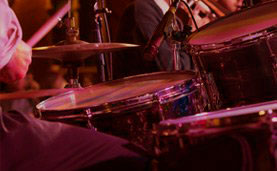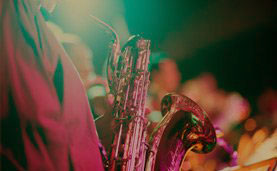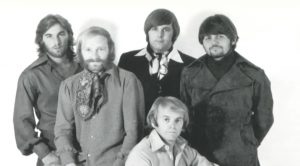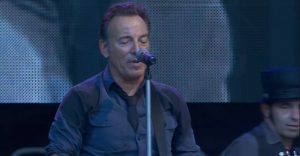The 20 Greatest Remakes and Covers Of The 1970s

via @lunaticsoul_00 / Instagram
There’s something oddly magical about a great cover song. Maybe it’s the way a familiar melody can sound completely different in someone else’s hands. Maybe it’s how a fresh voice can pull out emotions that were hiding in plain sight all along. Whatever it is, the 1970s seemed to have an endless supply of artists willing to take that leap — and the results were unforgettable.
Some covers honored the originals almost to the letter. Others twisted and stretched them into something barely recognizable, something brand new. Either way, the spirit of reinvention ran wild across the decade, showing up in every smoky club, every garage band demo, every late-night radio show that made you stop and listen just a little closer. Not every attempt was a masterpiece, but the best ones didn’t just revisit a song — they redefined it.
This list isn’t about which version is “better” or “truer.” It’s about the remakes and covers that stuck with people, the ones that took on a life of their own. Some made songs famous for the first time. Others dared to touch the untouchable. All of them remind us that music isn’t finished just because the first version is. Sometimes, the second (or third, or fourth) is where the real magic happens.
20. “You Are So Beautiful” – Billy Preston (1974) | Joe Cocker (1974)
Billy Preston’s “You Are So Beautiful” is tender in a way that feels almost fragile. His voice floats through the song, full of wonder and quiet devotion. You can hear the admiration, the awe, like he’s looking at someone he can’t quite believe is real. It’s soft, maybe even a little hesitant, and that’s what makes it so touching.
Joe Cocker’s version, though, is all about raw, cracked emotion. He doesn’t just sing the words — he drags them out like they weigh a hundred pounds each. His voice breaks, strains, almost gives out at times. It’s a performance that feels like it’s on the edge of falling apart, and because of that, it hits even harder.
Both versions are beautiful, but for very different reasons. Preston’s version is like a private prayer; Cocker’s feels like a public confession. And somehow, both manage to sound completely, painfully sincere.
19. “Love Hurts” – The Everly Brothers (1960) | Nazareth (1974)
The Everly Brothers first sang “Love Hurts” with a delicate sadness, more of a bittersweet sigh than a howl. Their harmonies are gorgeous, naturally, but the pain they describe feels almost distant, like they’re remembering it from a safe distance. It’s gentle, even when it’s aching.
Nazareth wasn’t interested in gentle. Their 1974 cover drags the heartbreak into the spotlight and forces you to look at it. Dan McCafferty’s rasping vocals practically tear the song apart, and the guitars moan along with him. It’s raw, ugly in spots, and honestly, that’s what makes it so powerful.
When people talk about “Love Hurts” today, it’s usually Nazareth’s version they’re thinking of. Not because the Everly Brothers were wrong — they weren’t — but because sometimes pain doesn’t feel tidy and reflective. Sometimes it just hurts, and you have to scream it out.
18. “Blinded By The Light” – Bruce Springsteen (1973) | Manfred Mann’s Earth Band (1976)
Bruce Springsteen’s original “Blinded By The Light” is classic early Springsteen — a tumble of words, half street poetry, half fever dream. It’s a little chaotic, a little messy, but it captures a kind of restless energy that feels authentic. Like someone trying to explain a life story in one breath before the moment slips away.
Manfred Mann’s Earth Band reworked it into something far slicker and more radio-friendly. Their version tightens up the sprawl, polishes the rough edges, and turns the whole thing into a proper anthem. Some of the weirdness gets lost in translation, but that’s also what makes it work so well for a wider audience. You don’t need a roadmap to enjoy the ride anymore.
Listening to the two back to back, you get a strange sense of déjà vu. They’re telling the same story, but somehow living it completely differently. It’s hard to say if one is better. It’s more like choosing between two ways of remembering the same wild night.
17. “Video Killed the Radio Star” – Bruce Woolley & The Camera Club (1979) | The Buggles (1979)
Bruce Woolley’s original take on “Video Killed the Radio Star” feels a little more grounded, even a little somber. There’s an underlying sadness to it — a sense that something is truly being lost as technology marches on. His version isn’t a rejection of change, exactly, but it doesn’t celebrate it either. It just kind of… acknowledges it.
The Buggles, on the other hand, made it famous. Their version is brighter, poppier, practically bubbling over with synths and ironic cheerfulness. It sounds playful at first, but listen closely and you realize there’s still a melancholy buried under all that shine. It’s like smiling through a goodbye you didn’t want to say.
It’s funny how a song that sounds so fun can leave you with such a weird ache. Maybe that’s why it became the first video ever played on MTV. It wasn’t just predicting the future — it was already mourning it.
16. “You Really Got Me” – The Kinks (1964) | Van Halen (1978)
The Kinks’ “You Really Got Me” might be one of the most important blueprints for hard rock ever laid down. It’s rough, it’s raw, and it practically trips over itself with energy. You can hear the amps almost breaking under the strain. In a way, it feels like the sound of teenage frustration pressed into vinyl.
Then Van Halen got their hands on it, and somehow made it even louder, faster, and — depending on your taste — maybe even a little more fun. Eddie Van Halen’s guitar practically sets itself on fire, and David Lee Roth delivers the vocals like he’s half-daring the song to keep up with him. It’s bigger in every direction, but it doesn’t lose the spirit of the original.
Comparing the two feels almost unfair because they’re speaking slightly different languages. The Kinks were practically inventing the vocabulary. Van Halen was already fluent and decided to start yelling. Both versions are necessary, though, if you really want to understand how rock grew up in the ’70s.
15. “You’re No Good” – Dee Dee Warwick (1963) | Linda Ronstadt (1974)
Dee Dee Warwick’s “You’re No Good” didn’t make much of a dent when it first appeared, even though her performance had this really wonderful toughness to it. There’s a raw frustration in her delivery that’s hard not to respect, even if the song itself didn’t climb the charts at the time. Some songs are just a little ahead of their moment, I guess.
When Linda Ronstadt recorded it in the ’70s, it suddenly made sense to the world. Her version is slicker, more controlled, but it never loses that crucial undercurrent of anger. It’s polished without being sterile, which is harder to pull off than most people think. Plus, Ronstadt’s voice — soaring and breaking at just the right moments — gives the song a bittersweet kind of defiance.
It’s strange how one version can be forgotten while another becomes iconic, even when the spirit behind both is so similar. Maybe it just comes down to timing. Or maybe, every once in a while, a song needs a second chance to find the audience it deserves.
14. “I Shot the Sheriff” – Bob Marley (1973) | Eric Clapton (1974)
When Bob Marley first recorded “I Shot the Sheriff,” it was more than just a catchy song; it was a layered statement. Marley’s sheriff wasn’t necessarily just a man in a uniform — it was authority, injustice, maybe even colonialism in disguise. The music itself had that slow, urgent build that made it feel almost like a protest whispered under the breath.
Clapton’s version, by comparison, sounds cleaner, more polished, and — depending on who you ask — a lot less politically loaded. It’s still catchy, still full of tension, but somehow it feels more personal and less communal. It turned into a massive hit for Clapton, and there’s a case to be made that it introduced reggae to a whole new audience, even if it smoothed out a lot of the edges.
Listening to both versions today, it’s hard not to feel a little torn. Clapton’s cover is a masterclass in adaptation — slick, sharp, unforgettable. But Marley’s original? It feels heavier. Like it’s carrying a burden the cover doesn’t even realize is there
13. “Cocaine” – J.J. Cale (1976) | Eric Clapton (1977)
J.J. Cale’s original “Cocaine” is easy to miss if you’re not paying attention. It’s laid-back, almost nonchalant, like someone shrugging through a confession they know you’re going to misinterpret anyway. There’s a casual danger to it, though — a sense that the song isn’t celebrating anything so much as quietly documenting a way of life.
Eric Clapton, predictably or maybe brilliantly, polished it up for wider audiences. His 1977 version has that tighter, radio-friendly punch, though it somehow manages to keep that same weary cynicism intact. Some listeners misread it, of course, taking it as an anthem instead of a warning, but honestly, that’s kind of what makes it interesting. Songs don’t get to choose how they’re used once they’re out in the world.
Between the two, there’s no easy call on which is “better.” Cale’s version feels lived-in, like it’s part of a dusty journal you weren’t supposed to find. Clapton’s feels more like a public service announcement wrapped up in a hit song. Both work. Maybe that’s why “Cocaine” still turns up everywhere from dive bars to luxury car commercials.
12. “Smiling Faces Sometimes” – The Temptations (1971) | The Undisputed Truth (1971)
The Temptations originally recorded “Smiling Faces Sometimes,” and it sounds exactly like you’d expect from a group that defined so much of Motown’s golden age: tight harmonies, a kind of silky, understated menace. But for whatever reason, their version wasn’t pushed as a major single. It kind of lingers in the background of their catalog, not forgotten exactly, just… overlooked.
Then The Undisputed Truth came along and completely reframed it. Their version stripped it down and turned it into something far creepier, almost psychedelic in its mood. There’s something unsettling about the way they handle the lyrics — a real sense that smiling faces hide a lot more than lies; they hide danger, betrayal, maybe even something worse.
It’s one of those rare cases where the cover doesn’t just reinterpret the song, it almost redefines it. When people talk about “Smiling Faces Sometimes” today, it’s usually the Undisputed Truth version that comes to mind first. The Temptations’ original feels like a whispered warning; the cover feels like a full-on alarm.
11. “Burning Love” – Arthur Alexander (1972) | Elvis Presley (1972)
Arthur Alexander’s version of “Burning Love” had all the ingredients of a hit, but it somehow slipped under the radar when it first came out. His performance carried a rawness that made the yearning in the lyrics feel all the more real. It wasn’t flashy, it didn’t need to be — it just simmered, quietly waiting for someone to notice.
Then Elvis Presley picked it up, and everything changed. His take on “Burning Love” blasted out of radios with a wild, electric energy that felt almost reckless compared to Alexander’s simmering delivery. It’s interesting, actually, because Elvis was already past his peak in terms of cultural dominance, but this song gave him a late-career jolt. A second wind, maybe, or at least the illusion of one.
Even now, listening to both versions back to back gives you a strange kind of whiplash. Alexander’s feels like something deeply personal, almost like a secret. Elvis’s version, on the other hand, feels bigger than life, made for stadiums and bright lights. Somehow, both manage to hit home, just in completely different ways.
10. “Without You” – Badfinger (1970) | Harry Nilsson (1971)
Badfinger’s original “Without You” is heartbreak wrapped in a pop-rock package. Their version aches, but it’s the kind of ache you tuck away and try not to show. It’s a little raw, a little jagged, and all the more real for it.
Harry Nilsson’s version, though — that’s full-on devastation. His soaring vocals turn “Without You” into a tragedy played out on a grand stage. The quiet moments ache, and the high notes practically shatter with grief. It’s operatic, but somehow still deeply personal.
Sometimes a cover doesn’t just reframe a song — it pulls it out of its shell entirely. Nilsson’s “Without You” didn’t erase Badfinger’s version; it just showed everyone how much more heartbreak a simple song could carry if you let it.
9. “Lady Marmalade” – The Eleventh Hour (1974) | Labelle (1974)
The Eleventh Hour’s original version of “Lady Marmalade” is perfectly fine — catchy, lively, playful enough to get stuck in your head if you let it. But there’s a slight tentativeness there, like they’re dipping their toes into the water rather than diving in.
Labelle didn’t just dive in — they cannonballed. Their version explodes with personality, powered by Patti LaBelle’s electrifying vocals and a boldness that simply can’t be ignored. “Voulez-vous coucher avec moi, ce soir?” wasn’t just a lyric anymore — it was a declaration.
Labelle’s “Lady Marmalade” became bigger than just a song. It became a moment, a statement, a soundtrack for anyone who wanted to live a little louder. The original might have sparked the fire, but Labelle turned it into a full-blown celebration.
8. “Drift Away” – John Kurtz (1972) | Dobie Gray (1973)
John Kurtz’s version of “Drift Away” has a laid-back, easygoing charm. It’s a little rough around the edges, but that kind of works for a song about letting music carry you away from your troubles. It feels unpolished in a way that fits the sentiment perfectly.
Dobie Gray took that rough diamond and polished it just enough. His version smooths out the edges, adds a touch more soul, and leans hard into the sheer comfort of the song. Listening to him sing it is like leaning back into a well-worn chair at the end of a long day.
When people talk about “feel-good” songs that don’t sound cheesy or fake, “Drift Away” almost always comes up. And it’s Dobie Gray’s voice — warm, generous, a little world-weary — that makes it feel like a safe place every single time.
7. “Oye Como Va” – Tito Puente (1963) | Santana (1970)
Tito Puente’s “Oye Como Va” is pure rhythm. It’s a party you wander into without an invitation but are instantly welcomed at. His version is bright, lively, a masterclass in how much life percussion can bring to a song. It’s joyful without ever being shallow.
Santana kept the spirit but turned up the volume. His version added electric guitar in a way that didn’t just accompany the rhythm — it danced with it. Suddenly, “Oye Como Va” wasn’t just Latin jazz; it was rock, and it didn’t lose an ounce of its heartbeat along the way.
Hearing the two versions back to back is a little like seeing the same street in broad daylight and then again at night with all the neon signs flashing. Different moods, same pulse. Both versions make it pretty much impossible to sit still.
6. “War” – The Temptations (1970) | Edwin Starr (1970)
The Temptations first recorded “War,” but their version was more polished, a little more restrained. It had the same powerful message, but the delivery felt careful, almost like they were holding back just enough to not scare anyone too much. It’s still strong — just… diplomatic.
Edwin Starr wasn’t interested in diplomacy. His version of “War” is pure, explosive outrage. Every time he shouts “War! Huh! Good God, y’all!” it hits like a hammer. There’s no mistaking how he feels about the subject, no reading between the lines necessary.
It’s one of those rare cases where the second version didn’t just become more popular — it practically erased the first from the conversation. Not because The Temptations did it wrong, but because sometimes a message needs a voice that’s willing to tear the walls down.
5. “Killing Me Softly with His Song” – Lori Lieberman (1972) | Roberta Flack (1973)
Lori Lieberman’s original version of “Killing Me Softly” has a lovely vulnerability to it. It’s quieter, smaller, almost like she’s trying to keep a secret even as she sings. There’s something incredibly intimate about it, though it never quite caught fire with the public.
Roberta Flack, on the other hand, took the song and turned it into an experience. Her voice glides over the melody, soft but deliberate, like someone carefully opening an old letter they’re afraid to read. The arrangement feels effortless, but underneath it is a deep, unspoken sadness that doesn’t need big gestures to be felt.
Sometimes it’s not about changing a song dramatically — it’s about filling every corner of it with something deeper. Roberta Flack didn’t just cover “Killing Me Softly” — she gave it a second life, one that would stay alive long after the first had faded.
4. “Black Magic Woman” – Fleetwood Mac (1968) | Santana (1970)
Fleetwood Mac’s “Black Magic Woman” has this cool, slinky vibe. Peter Green’s guitar work is understated but sharp, and the whole thing feels a little dangerous, like wandering into a bar you’re not sure you should be in. It’s got an edge, but it stays close to the shadows.
Santana didn’t just bring it out into the open — he lit it on fire. His version added that unmistakable Latin rock energy, and the song exploded into something hypnotic. The percussion, the swirling guitars, the slow build — it all creates a spell you don’t even want to break.
In a way, it’s a little sad how often people forget Fleetwood Mac recorded it first. But then again, it’s hard to blame anyone. Santana’s “Black Magic Woman” doesn’t just sound great — it feels inevitable, like the song was always meant to sound that way.
3. “Me And Bobby McGee” – Roger Miller (1969) | Janis Joplin (1971)
Roger Miller’s original “Me and Bobby McGee” is a gentle, wistful thing. His version strolls along like a memory you’re half-trying to hang onto. It’s got a kind of rough sweetness to it, one that doesn’t press too hard. Freedom isn’t just a word — it’s something you can hear in the easy way he sings.
Then Janis Joplin came in and tore the roof off. Her version is pure ache and grit, every note straining under the weight of emotions too big to sit still. It doesn’t stroll; it soars and crashes and weeps. It’s probably the most famous example of a cover outliving the original — and for good reason.
When you listen to Janis’s version, it doesn’t feel like a cover at all. It feels like she lived it, like every line came straight from the last breath of a road trip she never really came back from. Somehow, even after all these years, it still sounds like heartbreak in real time.
2. “Midnight Train to Georgia” – Jim Weatherly (1972, “Midnight Plane to Houston”) | Gladys Knight & the Pips (1973)
Jim Weatherly’s original version of the song wasn’t even about Georgia at first — it was a “Midnight Plane to Houston.” His take was soft, almost conversational, like a friend telling you about a choice they didn’t want to make but had to anyway. It had a quiet sadness to it, a resignation more than regret.
Then Gladys Knight & the Pips reworked it, shifting the setting and ramping up the emotional stakes. Their version of “Midnight Train to Georgia” feels weightier, richer, like a whole life packed into a few minutes of music. Gladys’s voice carries that kind of longing that’s too complicated to explain and too real to fake.
Changing the destination from Houston to Georgia somehow made all the difference. Maybe it’s because it gave the song a more universal feeling — leaving the big dreams behind to follow love, even when it hurts. Whatever the reason, once you hear their version, it’s hard to imagine it any other way.
1. “Papa Was a Rollin’ Stone” – The Undisputed Truth (1972) | The Temptations (1972)
The Undisputed Truth first introduced “Papa Was a Rollin’ Stone,” and it had all the makings of a moody, psychedelic soul classic. Their version is stripped down, almost eerie at times, like a family secret being whispered in the dark. It planted the seed, even if it didn’t quite grow into a full-blown hit right away.
The Temptations took that seed and turned it into a sprawling epic. Their version stretches out into a full cinematic experience — slow, deliberate, heavy with tension. The instrumental intro alone feels like a storm brewing. By the time the vocals come in, you’re already knee-deep in the story, whether you meant to be or not.
It’s funny to think about how a song that started so modestly ended up becoming one of the definitive tracks of the 1970s. The Temptations didn’t just cover “Papa Was a Rollin’ Stone” — they made it impossible to hear the name without hearing that slow, ominous bassline right behind it.































